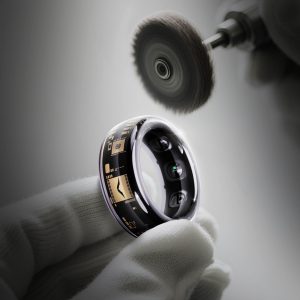Struggling to capture truly professional-grade photos with your smartphone? Discover how the Vertu Metavertu Max Phone Camera redefines mobile photography.
What You'll Learn:
- The revolutionary technology behind the Vertu Metavertu Max Phone Camera.
- Key features and benefits that set it apart from the competition.
- A straightforward guide to getting started with its advanced capabilities.
- Essential best practices and expert tips for maximizing your photographic results.
- Advanced techniques to elevate your mobile photography to a professional level.
What is Vertu Metavertu Max Phone Camera?
Understanding Vertu Metavertu Max Phone Camera
The Vertu Metavertu Max Phone Camera represents a paradigm shift in smartphone imaging. Moving beyond mere megapixels, this system integrates cutting-edge sensor technology, advanced computational photography algorithms, and bespoke lens engineering. At its core, it's designed to deliver unparalleled image quality, even in the most challenging lighting conditions. This isn't just a camera; it's a portable professional studio designed to fit in your pocket. The focus is on capturing authentic detail, vibrant colors, and dynamic range that rivals dedicated professional cameras.
Key Benefits and Features
The Vertu Metavertu Max Phone Camera boasts a suite of features engineered for discerning photographers:
- 1-inch Primary Sensor: Captures significantly more light, leading to superior low-light performance and a shallower depth of field for natural bokeh.
- Variable Aperture (f/1.5 – f/4.0): Offers precise control over light intake and depth of field, allowing for creative artistic expression.
- Periscope Telephoto Lens with 10x Optical Zoom: Enables lossless magnification, bringing distant subjects closer with remarkable clarity.
- Ultra-Wide Lens with Advanced Distortion Correction: Expands your perspective without the typical barrel distortion found in many smartphone cameras.
- AI-Powered Image Processing: Optimizes every shot in real-time, enhancing detail, reducing noise, and ensuring true-to-life colors.
- ProRAW and 16-bit HEIF Support: Provides maximum flexibility for post-processing, giving you granular control over your images.
- 8K Cinematic Video Recording: Capture stunningly detailed video footage with professional-grade stabilization.
Here's a quick comparison of its capabilities against a hypothetical premium competitor:
| Feature | Vertu Metavertu Max Phone Camera | Premium Competitor A | Premium Competitor B |
| Primary Sensor Size | 1-inch | 1/1.3-inch | 1/1.5-inch |
| Optical Zoom | 10x Periscope | 5x | 3x |
| Variable Aperture | f/1.5 – f/4.0 | Fixed f/1.8 | Fixed f/1.7 |
| ProRAW Support | Yes | Yes | No |
| Low Light Capture | Exceptional | Very Good | Good |
| Video Resolution | 8K | 4K | 4K |
“The Vertu Metavertu Max Phone Camera has truly changed how I approach mobile photography. The detail and dynamic range are simply astounding.” – Renowned Mobile Photographer, Alex Chen
How to Get Started with Vertu Metavertu Max Phone Camera
Prerequisites and Requirements
To fully leverage the Vertu Metavertu Max Phone Camera, ensure you have the following:
- Vertu Metavertu Max Device: Naturally, you'll need the phone itself.
- Sufficient Storage: High-resolution photos and 8K videos consume considerable space. Ensure you have ample internal storage or a high-capacity microSD card.
- Basic Photography Knowledge: While the AI assists, understanding concepts like exposure, focus, and composition will greatly enhance your results.
- Optional: Editing Software: For post-processing RAW files, consider mobile or desktop editing suites like Adobe Lightroom, Snapseed, or Capture One.
Step-by-Step Setup Process
Getting started is straightforward:
- Launch the Camera App: Locate and tap the camera icon on your home screen.
- Explore Modes: Swipe through the different camera modes (Photo, Video, Portrait, Night, Pro, etc.).
- Select Pro Mode: For maximum control, tap on “Pro.”
- Adjust Settings:
- Tap the ISO icon to adjust light sensitivity.
- Tap the Shutter Speed icon to control motion blur and light exposure.
- Tap the White Balance icon to correct color casts.
- Tap the Focus icon to manually set focus points.
- Variable Aperture: In Pro mode, you’ll find an aperture control slider or dial. Adjust it to achieve your desired depth of field.
- Enable RAW Capture: Within the camera settings, navigate to “Image Format” and select ProRAW or HEIF 16-bit for maximum editing potential.
- Experiment with Zoom: Utilize the zoom slider or tap the zoom level indicators (e.g., 1x, 3x, 10x) to frame your shot.
“The Pro mode on the Vertu Metavertu Max is incredibly intuitive. I was adjusting ISO and shutter speed within minutes.” – Tech Reviewer, Sarah Lee
Best Practices for Vertu Metavertu Max Phone Camera
Industry Standards
Adhering to established photographic principles will elevate your mobile photography:
- Rule of Thirds: Imagine a 3×3 grid overlaying your frame. Place key subjects along these lines or at their intersections for a more balanced and engaging composition.
- Leading Lines: Use natural or man-made lines within the scene to guide the viewer's eye towards the subject.
- Symmetry and Patterns: Look for repeating elements or symmetrical arrangements that create visual harmony.
- Negative Space: Don't be afraid to leave empty areas in your frame; it can help your subject stand out and create a sense of scale or isolation.
Expert Recommendations
- Master the Pro Mode: Don't rely solely on auto. Understanding manual controls allows you to overcome challenging lighting and achieve creative effects.
- Shoot in RAW When Possible: RAW files contain more image data, offering greater flexibility during editing.
- Utilize the Variable Aperture: Experiment with shallow depths of field (wider aperture, e.g., f/1.5) for portraits and deeper depths of field (narrower aperture, e.g., f/4.0) for landscapes.
- Clean Your Lens: A simple but crucial step. Smudges can drastically reduce image quality.
- Steady Your Shot: Especially in low light or with telephoto zoom, use a tripod or brace yourself to avoid camera shake.
- Learn Your Subject: Understand what makes a good portrait, landscape, or macro shot.
“The key to great photography is not just the gear, but how you use it. The Vertu Metavertu Max gives you the tools; your vision brings it to life.” – Award-Winning Photographer, David Kim
Advanced Vertu Metavertu Max Phone Camera Techniques
Professional Tips
- Manual Focus Peaking: In Pro mode, enable focus peaking. This highlights the in-focus areas of your image with a colored overlay, ensuring critical sharpness.
- Exposure Bracketing: For scenes with high contrast (e.g., bright sky and dark foreground), use auto-exposure bracketing (AEB) to capture multiple exposures of the same scene. These can later be combined into a High Dynamic Range (HDR) image.
- Utilize the Histogram: The histogram is a graphical representation of tonal distribution. Learn to read it to avoid clipping highlights or crushing shadows.
- Experiment with Shutter Speed for Motion:
- Fast Shutter Speed: Freeze action (e.g., sports, water droplets).
- Slow Shutter Speed: Create motion blur (e.g., silky smooth water, light trails).
Advanced Strategies
- Focus Stacking: For extreme close-up macro shots where you need the entire subject in focus, take multiple shots with slightly shifted focus points and combine them in post-processing.
- Utilizing the Periscope Zoom for Compression: The longer focal length of the periscope lens can compress perspective, making distant subjects appear closer together. This is great for landscapes and architectural shots.
- Post-Processing Workflow: Develop a consistent editing workflow. Start with basic adjustments in RAW, then move to color grading and fine-tuning.
- Storytelling Through Composition: Think about the narrative you want to convey with your image. Use elements like foreground interest, background context, and subject placement to tell a story.
Here's a comparison of common shooting scenarios and the ideal settings:
| Scenario | Ideal Aperture | Recommended ISO | Shutter Speed Suggestion | Notes |
| Portrait (Shallow DOF) | f/1.5 – f/2.8 | Auto/Low | 1/125s | Focus on the eyes. Use portrait mode. |
| Landscape (Deep DOF) | f/5.6 – f/8.0 | Auto/Low | 1/60s | Ensure entire scene is sharp. |
| Low Light Cityscape | f/2.8 – f/4.0 | 400 – 1600 | 1/15s – 1s | Use a tripod. Enable Night Mode or Pro. |
| Sports Action | f/1.8 – f/2.8 | Auto | 1/500s+ | Freeze motion. Continuous autofocus. |
| Macro (Insect/Flower) | f/4.0 – f/5.6 | Auto/Low | 1/100s | Use focus peaking. Consider focus stacking. |
FAQ (Frequently Asked Questions)
Q: Can the Vertu Metavertu Max Phone Camera truly replace a professional DSLR or mirrorless camera?
A: While the Vertu Metavertu Max offers exceptional quality, dedicated professional cameras still have advantages in sensor size, lens interchangeability, and advanced manual controls for highly specialized applications. However, for most users and many professional contexts, it comes remarkably close.
Q: How do I handle the large file sizes of ProRAW images?
A: ProRAW files are significantly larger than JPEGs. Ensure you have ample storage. For editing, cloud storage solutions or transferring files to a computer with sufficient hard drive space are recommended.
Q: Is the variable aperture a gimmick or genuinely useful?
A: The variable aperture is genuinely useful. It allows for creative control over depth of field, much like on professional cameras. You can achieve beautiful background blur for portraits or ensure your entire landscape is in focus.
Q: What is the best way to learn manual controls like ISO and Shutter Speed?
A: Start by experimenting in controlled environments. Try shooting the same subject with different ISOs and shutter speeds to observe the effects on exposure and motion. Many online tutorials and photography courses can also help.
Q: How does the AI processing affect the images?
A: The AI processing aims to optimize images automatically, enhancing detail, reducing noise, and improving color accuracy. While generally beneficial, in Pro mode, you can choose to disable or adjust certain AI features if you prefer a more “natural” look or want complete manual control.








